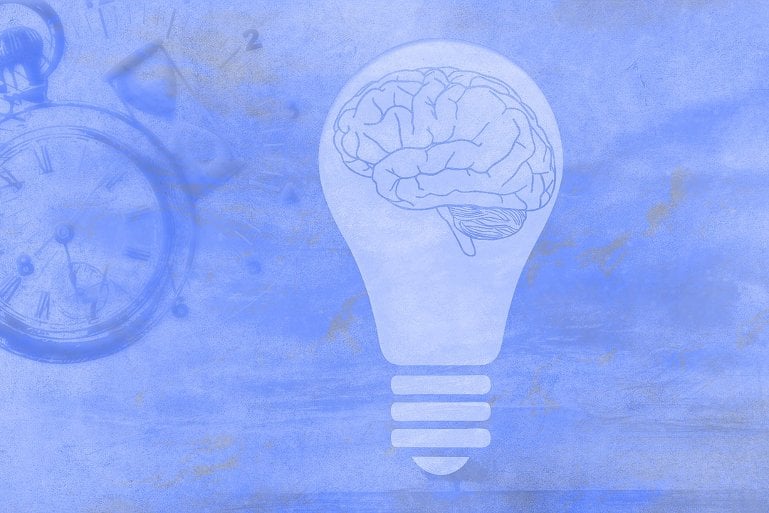Summary: Cortical thinning over time was associated with bipolar patients who experienced more manic episodes. The changes were most evident in the prefrontal cortex, an area of the brain associated with emotional control and executive function.
Source: Elsevier
Bipolar disorder (BD) is a debilitating psychiatric disorder characterized by fluctuating periods of depression and mania. Researchers have long suspected that BD may be accompanied by abnormal structural and functional changes in the brain. Small cross-sectional brain imaging studies of people with BD have shown hints at those changes, but the ability to interpret data collected at a single timepoint is limited.
Now, a multi-center longitudinal study shows aberrant changes over time in the brains of people with BD. Some changes were specifically associated with more episodes of mania.
The report appears in Biological Psychiatry.
The study involved a large international multi-center team of more than 70 researchers from the ENIGMA Bipolar Disorder Working Group.
“The ENIGMA Bipolar Disorder Working Group report illustrates the power of large-scale multi-center collaboration,” said John Krystal, MD, Editor of Biological Psychiatry. “Longitudinal neuroimaging studies are extremely challenging to conduct. Here, by combining data from 14 sites, we get one of the clearest pictures we have of the neurotoxic impact of bipolar disorder, particularly manic episodes.”
The researchers gathered magnetic resonance imaging (MRI) and detailed clinical data from 307 people with BD and from 925 healthy controls (HC) from 14 clinical sites worldwide. Participants were assessed at two timepoints, ranging from six months to nine years apart.
The most striking finding was that the cortex, the brain’s outermost layer, thinned over time to a greater extent in people who experienced more manic episodes. Those who did not have mania showed no cortical thinning or even cortical thickening. The changes were most evident in the prefrontal cortex (PFC), an area associated with executive control and emotion regulation.

“The fact that cortical thinning in patients related to manic episodes stresses the importance of treatment to prevent mood episodes and is important information for psychiatrists,” said senior author Mikael Landén, MD, PhD, Professor and Chief Physician at the Institute of Neuroscience and Physiology, University of Gothenburg, Sweden.
“Researchers should focus on better understanding the progressive mechanisms at play in bipolar disorder to ultimately improve treatment options.”
Compared to HC, people with BD showed a faster enlargement in the brain’s ventricles, cavities within the brain that contain cerebrospinal fluid. In cortical areas outside the PFC, BD participants actually showed slower thinning than HC participants.
Lead author Christoph Abé, PhD, Assistant Professor, Karolinska Institutet, Sweden, said: “The abnormal ventricle enlargements and importantly the associations between cortical thinning and manic symptoms indicate that bipolar disorder may in fact be a neuroprogressive disorder, which could explain the worsening of bipolar symptoms in some patients.”
One possibility to explain why BD patients may have slower thinning of the cortex compared to HC is that lithium, a medication used to treat BD, is known to have neuroprotective effects and could bolster cortical thickness. Regardless, the study provides new clues about the structural effects of BD on the brain over time.
About this bipolar disorder research news
Author: Rhiannon Bugno
Source: Elsevier
Contact: Rhiannon Bugno – Elsevier
Image: The image is in the public domain
Original Research: Open access.
“Longitudinal structural brain changes in bipolar disorder: A multicenter neuroimaging study of 1,232 individuals by the ENIGMA Bipolar Disorder Working Group” by Mikael Landén et al. Biological Psychiatry
Abstract
Longitudinal structural brain changes in bipolar disorder: A multicenter neuroimaging study of 1,232 individuals by the ENIGMA Bipolar Disorder Working Group
Background
Bipolar disorder (BD) is associated with cortical and subcortical structural brain abnormalities. It is unclear whether such alterations progressively change over time, and how this is related to the number of mood episodes. To address this question, we analyzed a large and diverse international sample with longitudinal magnetic resonance imaging (MRI) and clinical data to examine structural brain changes over time in BD.
Methods
Longitudinal structural MRI and clinical data from the ENIGMA-BD Working Group, including 307 BD patients and 925 healthy controls (HC), were collected from 14 sites worldwide. Male and female participants, aged 40 ± 17 years, underwent MRI at two time points. Cortical thickness, surface area, and subcortical volumes were estimated using FreeSurfer. Annualized change rates for each imaging phenotype were compared between BD and HC. Within patients, we related brain change rates to the number of mood episodes between time points and tested for effects of demographic and clinical variables.
Results
Compared with HC, BD patients showed faster enlargement of ventricular volumes and slower thinning of fusiform and parahippocampal cortex (0.18<d<0.22). More (hypo)manic episodes were associated with faster cortical thinning, primarily in the prefrontal cortex.
Conclusion
In the hitherto largest longitudinal MRI study on BD, we did not detect accelerated cortical thinning but noted faster ventricular enlargements in BD. Abnormal fronto-cortical thinning was however observed in association with frequent manic episodes. Our study yields insights into disease progression in BD, and highlights the importance of mania prevention in BD treatment.







